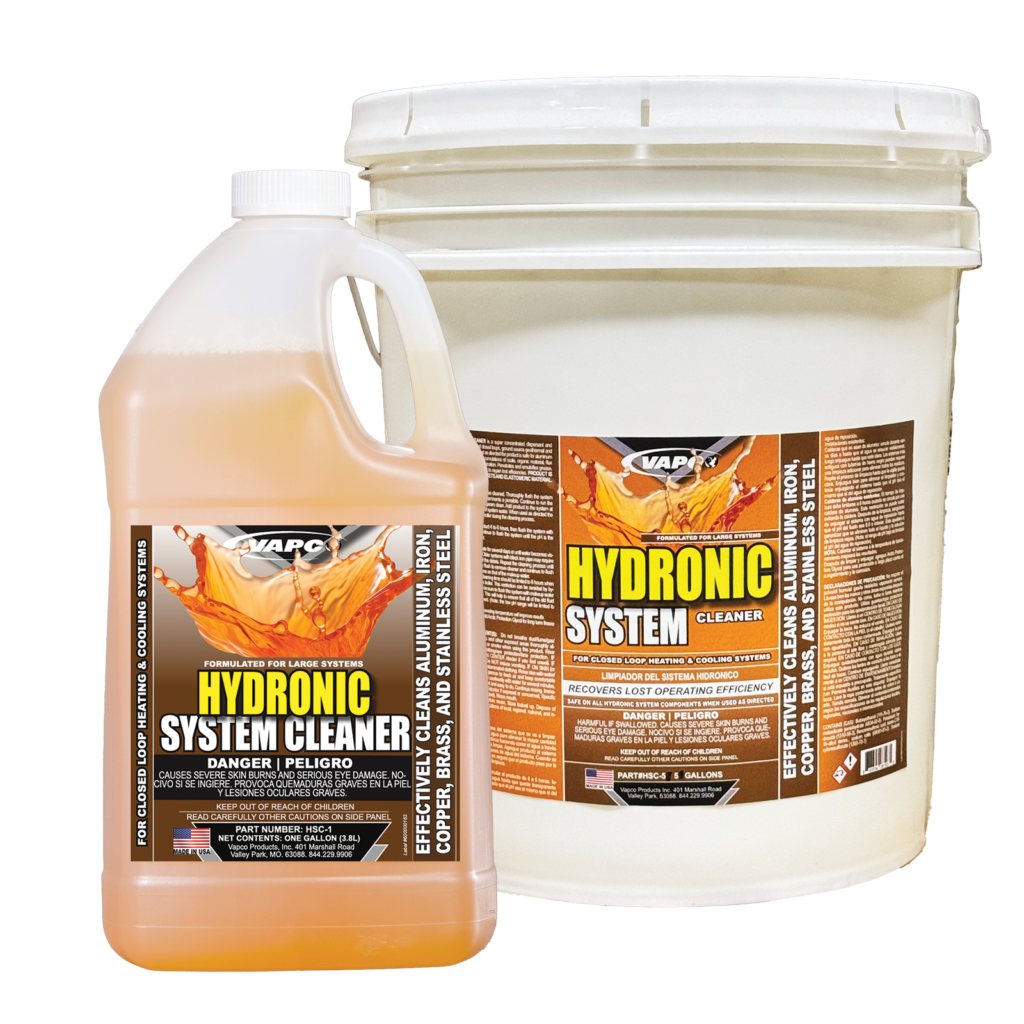Restore Peak Performance with a Hydronic System Cleaner

The Critical Role of a Hydronic System Cleaner
a dedicated hydronic system cleaner is not a luxury, but a fundamental tool for professional maintenance. A closed-loop hydronic system is a significant investment, and its long-term health is determined by its internal cleanliness. For HVAC contractors and wholesalers, the fluid inside is just one part of the equation—the system’s internal environment is what truly dictates performance and longevity.
Even the best-maintained systems can accumulate unseen contaminants over time. These unseen issues sabotage efficiency, destroy new fluid, and lead to premature component failure.
Hydronic System Cleaner: Uncover the Hidden Truths of System Contamination
Putting fresh, high-quality fluid into a dirty system is a recipe for failure. There are specific hidden costs of contamination and critical scenarios when a professional chemical cleaning is non-negotiable.
To explore these key issues in detail, please interact with the guide below.
When and Why to Use a **Hydronic System Cleaner**
Hover over the cards below to discover the hidden costs of contamination and the critical scenarios for using a system cleaner.
The Hidden Costs of Contamination and Why a Hydronic System Cleaner is Needed
Reduced Efficiency & High Bills
Rust, sludge, and mineral scale act as insulators, drastically reducing heat transfer. This forces the system to run longer and harder, leading to increased energy consumption.
Premature Glycol Failure
When new glycol is added to a dirty system, its protective inhibitors are immediately consumed fighting existing contamination, leaving the fluid's service life drastically shortened.
Component Damage
Suspended debris and metal shavings act like "liquid sandpaper," causing abrasive damage to sensitive components like pump seals, bearings, and impellers.
When to Use a Hydronic System Cleaner: Critical Scenarios
New System Commissioning
New piping contains manufacturing oils, flux, and debris. A pre-commissioning flush is essential to prevent immediate corrosion and ensure the new fluid performs as intended.
Before Fluid Replacement
Simply draining old fluid is not enough. Flushing with a cleaner removes years of accumulated sludge and scale, ensuring your new fluid investment isn't wasted.
Restoring an Inefficient System
A system suffering from poor performance or clogged strainers is a clear sign of fouling. A chemical cleaning can restore its original design efficiency.
The Professional's Choice: Ensuring Peak Performance
The right hydronic system cleaner is a powerful, yet safe, formula specifically engineered for these challenges. By using a professional-grade cleaner, you are not just flushing pipes; you are taking a critical step to restore efficiency, reduce energy consumption, and extend the lifespan of the entire system.
Whether you’re commissioning a brand-new loop or revitalizing an old one, a thorough chemical cleaning is the ultimate step toward guaranteeing long-term reliability and peak performance that every HVAC contractor can stand behind.
In Conclusion: Don’t let hidden debris compromise a hydronic system. Whether commissioning a new loop or revitalizing an old one, a thorough chemical cleaning is a fundamental step toward guaranteeing long-term reliability and peak performance that every HVAC contractor can stand behind.
Further reading
ASHRAE – Fundamentals of Water System Design: This is a course available through ASHRAE’s website, which provides a detailed breakdown of the topic.
BSRIA – Understanding the Need for Pre-Commission Cleaning: This resource is a guide from the BSRIA website. The most current and relevant guide is BG 29/2021.
CIBSE Journal – Best Practice for System Maintenance: This is a direct link to an article in the CIBSE Journal that discusses the importance of ongoing maintenance and water quality.
Product Links
Directions
Hydronic System Cleaner
A super-concentrated dispersant and corrosion cleaner for all types of closed loops, ground source geothermal, and solar heating systems. When used as directed, the product is safe for aluminum boilers and will quickly remove accumulations of scale, organic material, flux residue, cutting oils, dirt, and contamination.
Penetrates and emulsifies grease, soils, and other heavy contaminants to regain lost efficiencies.
Directions & Cleaning
Preparation & Dosing
Open all zone valves and thoroughly flush the system with water until it appears clean. Add the product at a rate of **1 gallon per 250 gallons** of system water.
Cleaning (Circulation Time)
- New Installations: Circulate for **4 to 6 hours**.
- Existing Non-Aluminum Boilers: Circulate for **several days** or until water is visibly fouled.
- Existing Aluminum Boilers: Limit cleaning time to **8 hours** unless the boiler is bypassed.
Post-Cleaning & Flushing
After cleaning, flush the system with water until it runs clear and the pH is the same as the makeup water (or 8.0 or below for aluminum systems).
